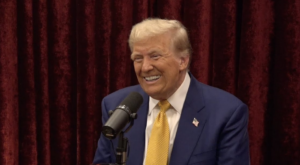Donald Trump's recent tariff threats against China have sparked global reactions as businesses brace for impact.
Trump's Tariff Ultimatum: A New U.S.-China Trade Standoff

Trump's Tariff Ultimatum: A New U.S.-China Trade Standoff
Tensions escalate as Trump threatens to increase tariffs on Chinese imports amid ongoing trade negotiations.
In a bold move, President Trump issued an ultimatum to China yesterday, demanding the immediate removal of its retaliatory tariffs on U.S. goods or face a staggering 50 percent increase on imports starting today. This aggressive stance comes at a time when many countries worldwide are urging the U.S. leader to reconsider the steep tariffs already in place, which now total 104 percent on Chinese imports.
Countries across Asia have expressed their concern, with Bangladesh and Vietnam appealing to Trump to postpone the tariff imposition. Meanwhile, the Philippines has proposed a reduction in its tariffs on U.S. products in a bid to alleviate the trade tensions. South Korea and Japan have also expressed a desire to engage in discussions with the Trump administration aimed at resolving the escalating situation.
In Europe, officials are pursuing a dual strategy. While they are willing to cut tariffs on American automobiles—a gesture Trump rejected as insufficient—they are simultaneously preparing a comprehensive list of products for potential retaliatory tariffs against U.S. exports. Representatives from the European Union are scheduled to vote tomorrow on this list.
The financial markets reacted to the news with volatility, as Wall Street's S&P 500 index closed the day down, reflecting the apprehension surrounding the uncertain trade landscape.
In parallel developments, Chief Justice John Roberts has temporarily blocked an order requiring the U.S. to return a Salvadoran immigrant that had been incorrectly deported. Additionally, the Trump administration is facing scrutiny for pulling government websites and data offline, potentially skewing historical narratives. Plans have also been announced to invest $45 billion into expanding immigrant detention facilities—marking a dramatic increase in the scale of such operations within the U.S.





















